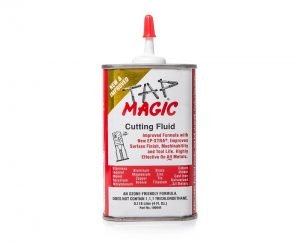Tools

Showing all 18 results
-
Sale!
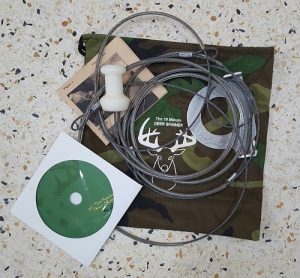
10 Minute Deer Skinner
Original price was: $28.99.$22.95Current price is: $22.95.How many times have you said, “Now that the animal is down, The fun stops and the work starts.”
Not so with this handy tool.
• Absolutely the fastest and easiest way to skin a deer • Keeps meat clean from hair and other contaminants • Professional method of skinning, minimal cutting and reduces nicks in hide • Uses the power of your vehicle to quickly and efficiently remove deer skin The 10 Minute Deer Skinner is the most time efficient method that we’ve found (using the least amount of physical effort) to take a deer from the buck pole to the deep freeze. Simply field dress your deer and placed on a clean sheet of plastic before the 10 Minute Deer Skinner is utilized.
STEP 1: Extend the skin cut on the deer from the field dressed cut to the base of head. (Two to four inches from the head.) From the end of this cut, make a complete circle around the neck, connecting with the original cut. Important: Cut skin only, not the meat.
STEP 2: Attach loop of plain cable to an immovable object (tree, stump, ball hitch of parked vehicle, etc.). Slip the loop on the other end of plain cable around the deer head, behind the ears, and hand tighten. From cut on back of neck, pull hide back toward the tail six (6) to ten (10) inches.
STEP 3: Cut skin on each front leg from knee joint to brisket cut. Make a cut circling the knee joint. Note: DO NOT PULL SKIN. Again, cut skin only, not meat. Brush hair off drop cloth, and clean area around the deer, so the skinned carcass will drop on a clean surface.
STEP 4: This step will utilize the two stage ball and skinner plate for hide removal. Take the long cable that contains the skinner plate and two stage ball and place the skinner plate (flat surface down) on the raw side of the hide. Push the small end of the two stage ball from the hair side of the hide, through the hole in the skinner plate. Hand tighten cable around the narrow section of the two stage ball by pulling only on the coated end of the cable.
STEP 5: Advance vehicle (slowly) to remove slack. Hunter should stand to the side of deer for safety reasons and to signal the driver. Vehicle should be advanced (see Figure 4) until skin is removed to the hind leg joints. Cut skin around each back leg between knee and ankle joint. Resume truck advancement (if necessary) until skin is completely removed. Your deer should be completely skinned and dropped back on a clean, plastic surface.
Note: If the animal has been down for an extended period of time, the front legs of the deer may need to be moved toward rear to permit clean skin removal around the legs. Also, if the hide is to be kept, skin tail by hand (as shown in video). Finally, if the hide is to be tanned, split each back leg open from hind quarter to end of leg.
Kit includes: Both Cables with the skinner system fully assembled and ready to use. Written instructions, a DVD with an instructional video on how to use the 10 Minute Deer Skinner and a pouch the carry it all in. Make Skinning Fun!
-
Sale!

10 Minute Deer Skinner x 2 and get a free knife
Original price was: $69.90.$37.95Current price is: $37.95.Buy 2, 10 Minute Deer Skinners and get this knife Free!
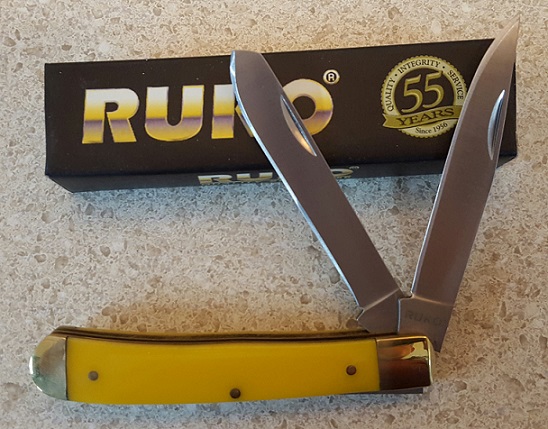
• Absolutely the fastest and easiest way to skin a deer • Keeps meat clean from hair and other contaminants • Professional method of skinning, minimal cutting and reduces nicks in hide • Uses the power of your vehicle to quickly and efficiently remove deer skin The 10 Minute Deer Skinner is the most time efficient method that we’ve found (using the least amount of physical effort) to take a deer from the buck pole to the deep freeze. Simply field dress your deer and placed on a clean sheet of plastic before the 10 Minute Deer Skinner is utilized.
STEP 1: Extend the skin cut on the deer from the field dressed cut to the base of head. (Two to four inches from the head.) From the end of this cut, make a complete circle around the neck, connecting with the original cut. Important: Cut skin only, not the meat.
STEP 2: Attach loop of plain cable to an immovable object (tree, stump, ball hitch of parked vehicle, etc.). Slip the loop on the other end of plain cable around the deer head, behind the ears, and hand tighten. From cut on back of neck, pull hide back toward the tail six (6) to ten (10) inches.
STEP 3: Cut skin on each front leg from knee joint to brisket cut. Make a cut circling the knee joint. Note: DO NOT PULL SKIN. Again, cut skin only, not meat. Brush hair off drop cloth, and clean area around the deer, so the skinned carcass will drop on a clean surface.
STEP 4: This step will utilize the two stage ball and skinner plate for hide removal. Take the long cable that contains the skinner plate and two stage ball and place the skinner plate (flat surface down) on the raw side of the hide. Push the small end of the two stage ball from the hair side of the hide, through the hole in the skinner plate. Hand tighten cable around the narrow section of the two stage ball by pulling only on the coated end of the cable.
STEP 5: Advance vehicle (slowly) to remove slack. Hunter should stand to the side of deer for safety reasons and to signal the driver. Vehicle should be advanced (see Figure 4) until skin is removed to the hind leg joints. Cut skin around each back leg between knee and ankle joint. Resume truck advancement (if necessary) until skin is completely removed. Your deer should be completely skinned and dropped back on a clean, plastic surface.
Note: If the animal has been down for an extended period of time, the front legs of the deer may need to be moved toward rear to permit clean skin removal around the legs. Also, if the hide is to be kept, skin tail by hand (as shown in video). Finally, if the hide is to be tanned, split each back leg open from hind quarter to end of leg.
Kit includes: Both Cables with the skinner system fully assembled and ready to use. Written instructions, a DVD with an instructional video on how to use the 10 Minute Deer Skinner and a pouch the carry it all in. Make Skinning Fun!
-
Sale!

10 Minute Deer Skinner x 2 and get a free skinning knife
Original price was: $69.95.$39.50Current price is: $39.50.Buy 2, 10 Minute Deer Skinners and get this knife Free!
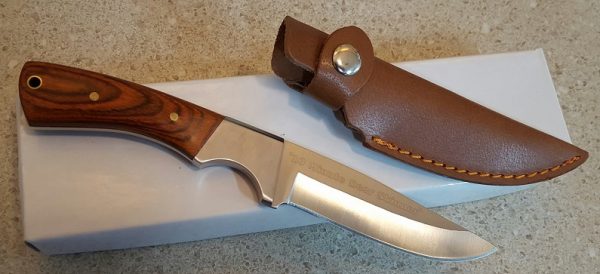
• Absolutely the fastest and easiest way to skin a deer • Keeps meat clean from hair and other contaminants • Professional method of skinning, minimal cutting and reduces nicks in hide • Uses the power of your vehicle to quickly and efficiently remove deer skin The 10 Minute Deer Skinner is the most time efficient method that we’ve found (using the least amount of physical effort) to take a deer from the buck pole to the deep freeze. Simply field dress your deer and placed on a clean sheet of plastic before the 10 Minute Deer Skinner is utilized.
STEP 1: Extend the skin cut on the deer from the field dressed cut to the base of head. (Two to four inches from the head.) From the end of this cut, make a complete circle around the neck, connecting with the original cut. Important: Cut skin only, not the meat.
STEP 2: Attach loop of plain cable to an immovable object (tree, stump, ball hitch of parked vehicle, etc.). Slip the loop on the other end of plain cable around the deer head, behind the ears, and hand tighten. From cut on back of neck, pull hide back toward the tail six (6) to ten (10) inches.
STEP 3: Cut skin on each front leg from knee joint to brisket cut. Make a cut circling the knee joint. Note: DO NOT PULL SKIN. Again, cut skin only, not meat. Brush hair off drop cloth, and clean area around the deer, so the skinned carcass will drop on a clean surface.
STEP 4: This step will utilize the two stage ball and skinner plate for hide removal. Take the long cable that contains the skinner plate and two stage ball and place the skinner plate (flat surface down) on the raw side of the hide. Push the small end of the two stage ball from the hair side of the hide, through the hole in the skinner plate. Hand tighten cable around the narrow section of the two stage ball by pulling only on the coated end of the cable.
STEP 5: Advance vehicle (slowly) to remove slack. Hunter should stand to the side of deer for safety reasons and to signal the driver. Vehicle should be advanced (see Figure 4) until skin is removed to the hind leg joints. Cut skin around each back leg between knee and ankle joint. Resume truck advancement (if necessary) until skin is completely removed. Your deer should be completely skinned and dropped back on a clean, plastic surface.
Note: If the animal has been down for an extended period of time, the front legs of the deer may need to be moved toward rear to permit clean skin removal around the legs. Also, if the hide is to be kept, skin tail by hand (as shown in video). Finally, if the hide is to be tanned, split each back leg open from hind quarter to end of leg.
Kit includes: Both Cables with the skinner system fully assembled and ready to use. Written instructions, a DVD with an instructional video on how to use the 10 Minute Deer Skinner and a pouch the carry it all in. Make Skinning Fun!
-
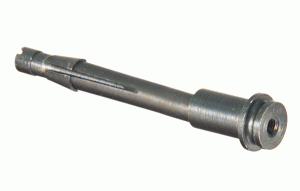
Broken Shell Extractor 223/5.56
$6.95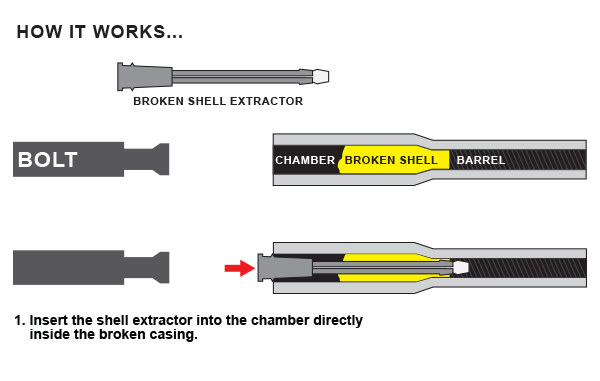
-
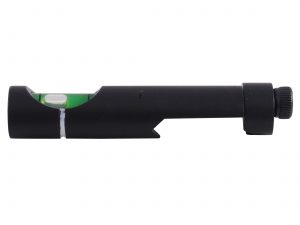
Bubble Level, SME (Weaver Dovetail)
$15.95The SME Bubble Bore level allows the shooter to check both the rifle bore and the reticle alignment at a glance. Constructed of aircraft grade aluminum.
Specification: SME Bubble Bore Level
Material: Aluminum
Notes:
- Attaches to any Weaver-style rail or base.
- Ambidextrous Mounting
- Assures bore alignment at a glance.
- White line on housing for quick reference.
- Hex wrench for mounting included
-
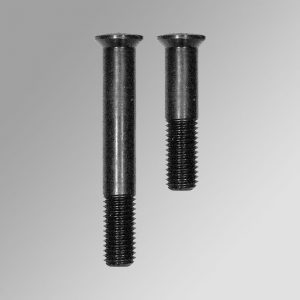
Forster – Trigger Guard Screw Sets
$7.49These simple tools allow you to keep the barreled action properly aligned in the stock during the inletting process. Without them it is very difficult to get a tight inlet.
- 98 Mauser
- Springfield 03, 03-A3 and Krag actions
- Remington 700, 721, 722
- Savage 110
- Winchester 70
- Sako
-
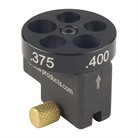
Forster Datum Dial
$89.95The Forster Datum Dial makes it possible for the handloader or gunsmith to use ordinary dial calipers to make normally difficult length measurements based on the case shoulder. By measuring cases to the datum line on the shoulder, the reloader can custom-fit the ammunition to a rifle’s chamber for the best possible fit for better accuracy potential and longer case life.
Gunsmiths can easily check the length of customers reloads verses the chamber.
This tool can also be used to double check headspace gauges if questions arise
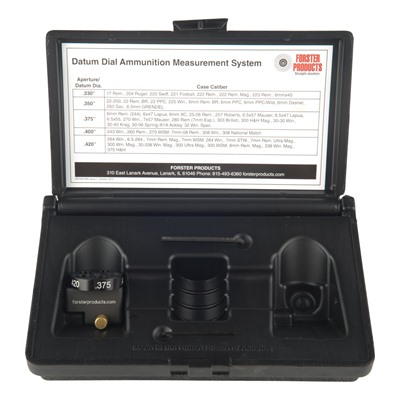
Datum Dial in box, from Forster
Included are complete instructions, storage box, and a laminated chart with common datum diameters.
-
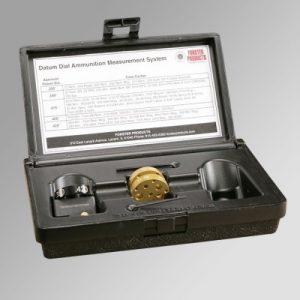
Forster Datum Dial Kit
$132.95The Forster Datum Dial Kit makes it possible for the handloader or gunsmith to use ordinary dial calipers to make normally difficult length measurements based on the case shoulder. By measuring cases to the datum line on the shoulder, the reloader can custom-fit the ammunition to a rifle’s chamber for the best possible fit for better accuracy potential and longer case life.
The gold “bullet dials” makes it easy to accurately determine bullet seating depth measured from the ogive when changing the seater die setting or when checking loaded rounds for consistency. It can also be used to check the bullets alone for variations that could hurt accuracy.
The Complete Kit includes the Body with Case Dial for checking cases and two Bullet/Cartridge Dials. The #1 dial fits 224, 243, 264, 284, and 308 calibers. The #2 dial fits 172, 204, 257, 277, and 338.
Gunsmiths can easily check the length of customers reloads verses the chamber. Seating depth verses throat, and uniformity of ammunition. All errors that can make problems hard to diagnose.
This kit can also be used to double check headspace gauges if questions arise.
Included are complete instructions, storage box, and a laminated chart with common datum diameters.
-
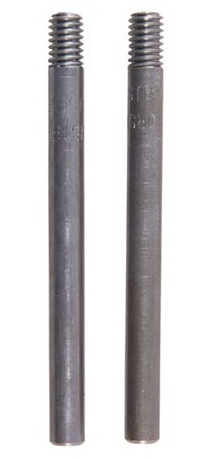
Forster Inletting Guide Screws (Stock Making)
$8.95These simple tools allow you to keep the barreled action properly aligned in the stock during the inletting process. Without them it is very difficult to get a tight inlet.
- 98 Mauser
- Springfield 03, 03-A3 and Krag actions
- Enfield 1914, 1917 and SMLE
- CZ 550 or 7.7 Jap Arisaka
- Remington 700, 721, 722
- Winchester 70 or 54
- Sako
-
Sale!
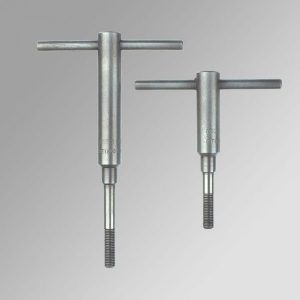
Forster Stock Makers Hand Screws (Stock Making)
$19.95These simple tools allow you to keep the barreled action properly aligned in the stock during final fitting.
Recommended by stockmakers, these Forster Stockmakers Hand Screws are used in the final accurate fitting of the stock to the action. These screws are precision made and hardened to make repeated trial fittings. Set of two.
To save time and to avoid damaged guard screws or a ruined stock, don’t attempt to inlet a stock without the proper stockmakers hand screws.
- 98 Mauser
- Remington 700, 721, 722
- Winchester 70 or 54
- Enfield P-14 or P-17
- Springfield or Krag
- Sako: Except, Model 75
- Ruger 77
- 7.7 Jap Arisaka
- 6.5 Jap
-
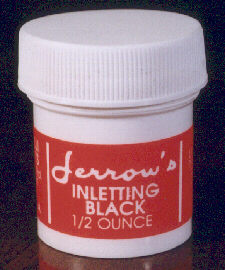
Jarrow’s Inletting Black
$14.85JERROW’S INLETTING BLACK The standard among stock makers since 1963! Does not dry out or soak into the wood. Leaves a good clear mark, yet cleans up easily. A small amount goes a long way. Positively the best products on the market for precision hand fitting of gunstocks, knife handles, cabinet furniture; all precision inletting. Inlay / fit parts to wood with ease.
-
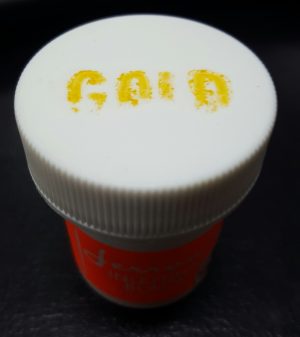
Jarrow’s Inletting Gold
$19.95JERROW’S INLETTING GOLD
Inletting Gold is for those very dark woods and ebony forends that Inletting Black just won’t work on. Also works well on fiberglass and composite stocks. The standard among stock makers since 1963! Does not dry out or soak into the wood. Leaves a good clear mark, yet cleans up easily. A small amount goes a long way. Positively the best products on the market for precision hand fitting of gunstocks, knife handles, cabinet furniture; all precision inletting. Inlay / fit parts to wood with ease.
-
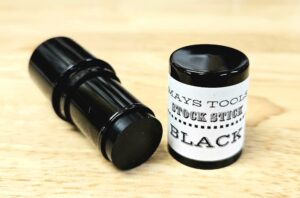
Mays Tools Stock Stick
$24.95A matte contrasting transfer material for inletting any part into a stock. Simply apply a thin coat to the part that you wish to inlet.Seat into stock recess tap with rawhide or similar mallet. Remove part and scrape away contact area you wish to remove from the stock. Used like other inletting marking systems to quickly and easily identify contact areas between the metal and stock. In an easy to use convenient applicator. Makes a perfect inletting job easy!
-
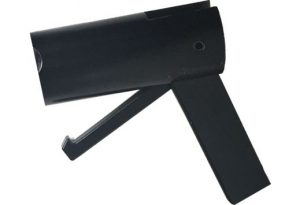
Remington 700 Bolt Disassembly Tool
$54.99Removes striker assembly in seconds for fast disassembly of all Remington bolts. Works with spring relaxed or cocked. Hook fits into the notch of the firing pin head. Rotating the lever pulls firing pin head back and locks it. Fast and easy.
-
Sale!
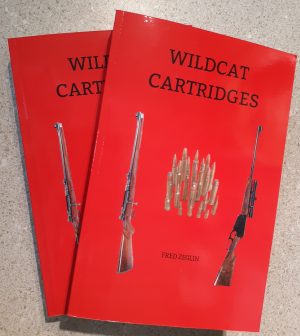
Wildcat Cartridges, Reloader’s Handbook of Wildcat Cartridge Design
Original price was: $49.95.$25.95Current price is: $25.95.In 2005 the hard bound first edition of this handbook hit the market. Since that time it has become a collectable book. This reprint is a faithful reprint of the first edition, now in paperback form.
Fred Zeglin was a gunsmith and custom rifle builder long before he turned to writing. The origin of this book was formed in Fred teaching gunsmiths how to make reamer and reloading dies, as well as how the design and develop a successful wildcat cartridge with tried and true, safe methods.
The last Gunsmith to tackle this subject was P.O. Ackley in the early 1960’s. Fred took inspiration from Ackley’s writings to create a valuable snapshot of the wildcat community since Ackley left the range.
During Zeglin’s years in the gun business he has developed a large number of wildcats, both for his own use and for clients. He made chamber reamers and reloading dies for his customers projects, partly to save time & money, but mostly to deliver product for his clients that they really could not acquire anywhere else.
This manual contains ideas and methods that you will find in no other source. If you are a reloader, wildcatter or gunbug of any sort; you will enjoy and value the history and how-to information found in this book!
574 Pages, 6″x9″, paperback. Signed by the Author


